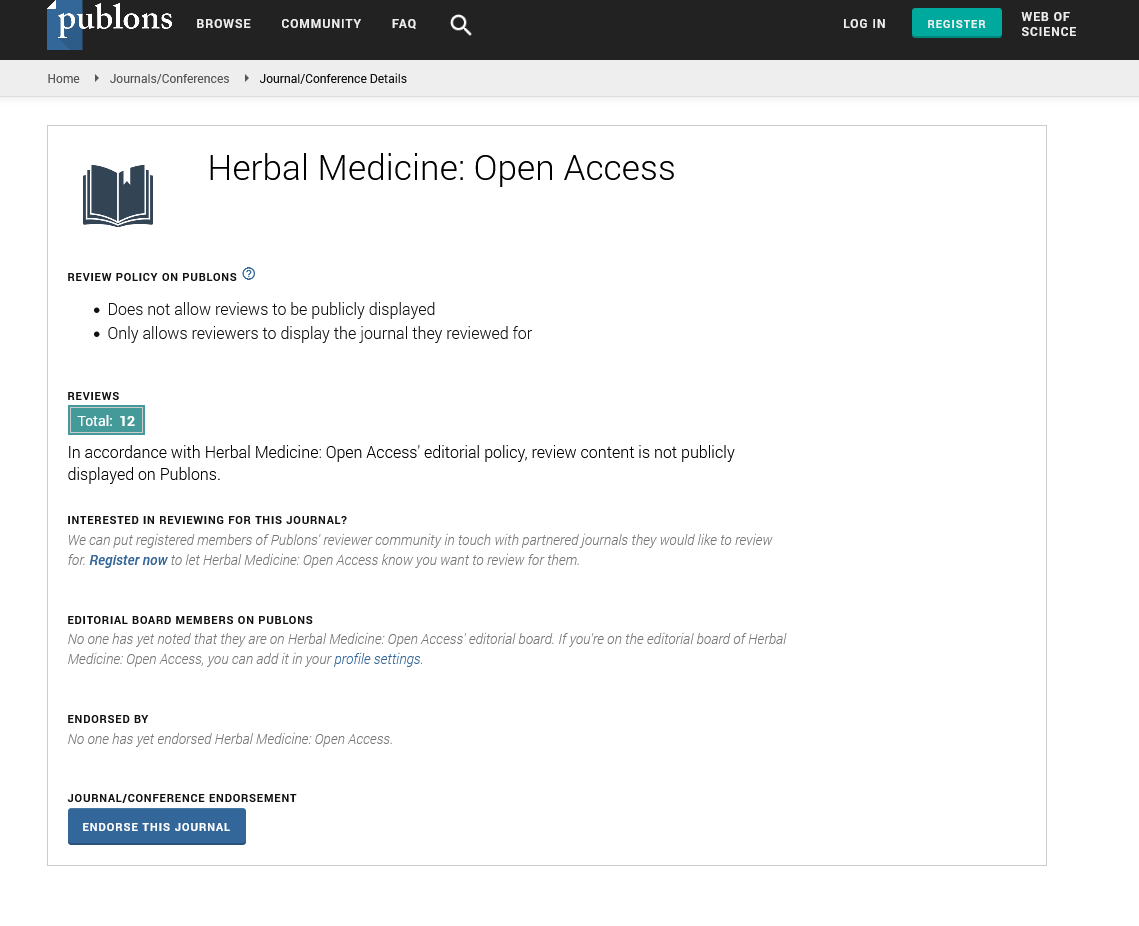Abstract
Ethnomedical outcomes on botanicals often used for children�??s health in South Eastern Nigeria
This research reviews and documents statistics on medicinal plants and their botanical planning used in the treatment of children’s ailments in South-eastern Nigeria. Children under the age of five in developing countries suffer from diseases with high morbidity and mortality rate yearly due to inaccessible and unaffordable health care. Organized questionnaires were managed to the herbal sellers, traditional medicine general practitioner, nursing mothers and adult inhabitants to gather data on the names of plants cast-off to treat the duration of treatment, adverse effects, conditions, methods of provision, and the methods of management of the plant materials. A total of 135 plants belonging to 55 families were identified for the management of children’s health in the area. Common paediatric ailments which were said to be treated with herbal remedies by the respondents included malaria, pneumonia, stomach ache, diarrhoea, dysentery, measles, chicken pox/small pox, convulsion, jaundice, pile, ringworm, scabies, eczema, stubborn cough, scurvy, catarrh, wounds, boils, insect bites, food poison, cholera, and umbilical cord complications. Calculations of respondent were; nursing mothers (11.1%), herbal sellers were (48.2%), traditional medical practitioners (21.6%), and others (19.1%). The most occurring plant families were Apocynaceae, Fabaceae and Euphorbiaceae with eight species of plants each, followed by Asteriaceae and Annonaceae with seven and six species in turn. The recipes were made from the combination of different parts of two or more plants species, and others were made from single plant parts. Methods of withdrawal were regularly decoction, raw clutching out of the juice and infusion, while oral management was the foremost route of administration.
Author(s):
Chioma Jovita Nwakamma
Abstract | PDF
Share this

Google scholar citation report
Citations : 271
Herbal Medicine: Open Access received 271 citations as per google scholar report
Herbal Medicine: Open Access peer review process verified at publons
Abstracted/Indexed in
- Google Scholar
- JournalTOCs
- China National Knowledge Infrastructure (CNKI)
- Directory of Research Journal Indexing (DRJI)
- WorldCat
- Publons
- Secret Search Engine Labs
- Zenodo
Open Access Journals
- Aquaculture & Veterinary Science
- Chemistry & Chemical Sciences
- Clinical Sciences
- Engineering
- General Science
- Genetics & Molecular Biology
- Health Care & Nursing
- Immunology & Microbiology
- Materials Science
- Mathematics & Physics
- Medical Sciences
- Neurology & Psychiatry
- Oncology & Cancer Science
- Pharmaceutical Sciences


